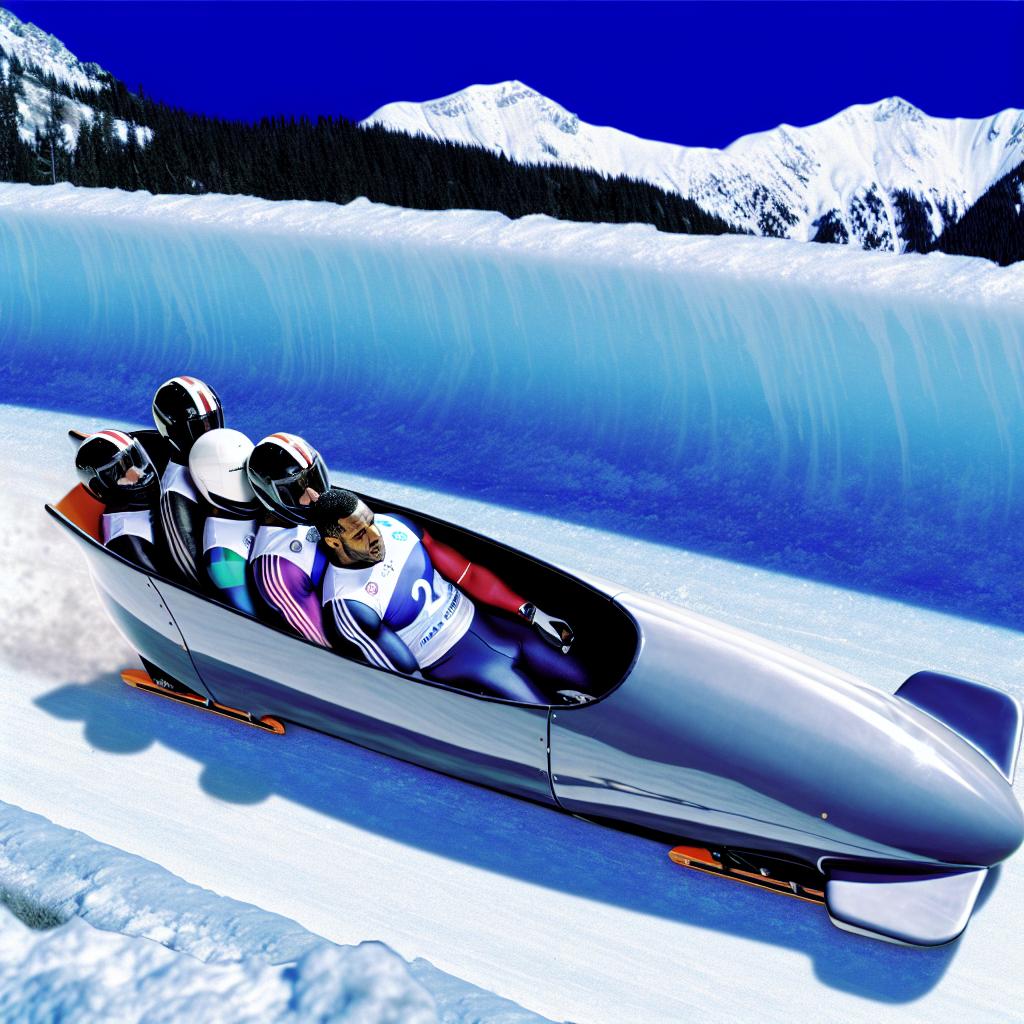The Thrill and Mechanics of Bobsledding
Bobsledding, a compelling winter sport, captivates enthusiasts with its remarkable combination of speed and technical complexity. Since being introduced as part of the Winter Olympics in 1924, it has evolved into an exhilarating event that necessitates an extraordinary blend of athleticism, precision, and engineering acumen. This document elaborates on various aspects of the sport, offering insights into its intricacies and appeal.
The Bobsled Track
A bobsled track is an architectural marvel, meticulously crafted to provide the ultimate test for the teams. These tracks are typically ice-covered and span a labyrinthine course measuring between 1,200 to 1,500 meters in length. Crafted with complex design elements, tracks include steep curves and high-banked sections. Such features inherently challenge competitors, demanding they navigate with utmost speed and stable control. The aim is to minimize G-force impacts on the riders. However, the physical forces experienced during a race can be as exhilarating as they are challenging, testing the limits of human endurance and technological expertise.
Bobsled Design
The modern bobsled embodies a fusion of cutting-edge aerodynamics and advanced materials engineering. These sleds are constructed around a lightweight metal frame, commonly aluminum, and enveloped in a streamlined fiberglass shell to minimize air resistance and maximize speed. Essential components include the steering and braking mechanisms. These mechanisms demand a high level of skill from the operators to function effectively, as they directly impact the sled’s performance. Precision in design and diligent maintenance of these bobsleds is crucial; even slight modifications can significantly affect speed and handling capabilities, rendering the engineering process both an art and a science.
The Role of the Bobsled Team
The structure of a bobsledding team is meticulously organized, highlighting the essential roles and teamwork. Typically, a team consists of a pilot and several push athletes. The pilot assumes a pivotal role, responsible for steering the sled and executing split-second adjustments that are critical to optimizing speed and maintaining control. This requires a combination of instinct, experience, and training. Equally important are the push athletes, who contribute during the crucial start phase of the race. They propel the sled with explosive power and precision, crucial to achieving an optimal launch from a standstill. Their synchronization and sheer strength often determine the outcome, highlighting their role in the team’s success or failure.
Competition and Safety
The realm of bobsledding competitions is highly competitive, with nations around the world investing substantial resources in both training and innovative technology to obtain a competitive advantage. Despite the intense competitive spirit, safety remains a primary concern. Engineers continually strive to enhance track and sled designs, seeking to mitigate risks without detracting from the inherent excitement of the sport. Helmets and protective suits constitute mandatory safety equipment for all competitors. During events, medical teams are always on standby, ensuring that they can provide immediate assistance if an incident occurs, underscoring the sport’s commitment to safety.
For those who are keen on exploring the dynamic world of bobsledding, various organizations provide rich resources. A prominent example is the International Bobsleigh & Skeleton Federation, which offers a wealth of information on upcoming competitions, training opportunities, and the storied history of the sport.
An Insight Into Historical Context
To fully appreciate bobsledding, one must acknowledge its historical development. Originating in the late 19th century, the sport quickly captivated audiences and participants alike. The first races took place on natural ice courses in Switzerland, gradually progressing to more formalized tracks. Over the years, bobsleigh evolved with technological advancements, particularly in sled design and track engineering, contributing to its rapid growth and increasing popularity as a winter sport throughout the world.
Technological Advancements in Bobsledding
Technology plays an instrumental role in bobsledding’s evolution. Innovations in materials science and engineering have profoundly transformed the construction of bobsleds, making them lighter, faster, and more durable. The use of wind tunnel testing has refined sled aerodynamics, significantly enhancing performance. Additionally, technology has not only improved the sleds but also the understanding of physical forces and environmental conditions, allowing teams to strategize with remarkable accuracy.
The International Appeal of Bobsledding
Bobsledding’s allure extends beyond its native confines, capturing global attention and participation. Various regions across the world, from Europe to North America and Asia, have embraced the sport, each adding unique elements to its culture and practice. This wide appeal is reflected in the international competitions that take place annually, featuring elite athletes who hone their skills for years in pursuit of the golden prize at events such as the Winter Olympics.
The Role of Coaching and Training
At the heart of any successful bobsled team is thorough and strategic coaching and training. Coaches contribute years of experience and tactical approaches to develop customized training programs that address the team’s unique strengths and weaknesses. Teams undergo rigorous training regimes encompassing physical fitness, team coordination, and technical know-how related to piloting and pushing techniques. These programs are crucial to ensuring athletes perform at their peak during competitions.
Environmental Impact and Sustainability
Bobsledding, like many sports, faces modern challenges associated with environmental impact and sustainability. Constructing and maintaining ice tracks require significant energy resources, prompting a push towards sustainable practices within the sport. Innovations in track cooling systems and environmentally friendly materials are gradually being adopted to lesson the sport’s ecological footprint, reflecting a growing consciousness of sustainability in sporting events worldwide.
Overall, bobsledding remains a fascinating sport, steeped in history and marked by continual innovation and international camaraderie. Its unique blend of speed, technology, and teamwork continues to captivate audiences, making it a celebrated and enduring fixture in the world of winter sports.
